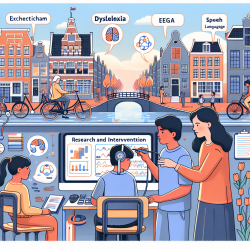Understanding the Challenge: Burnout in Education
In today's fast-paced educational environment, superintendents and educators often find themselves overwhelmed by the demands of creating and managing Individualized Education Programs (IEPs). This burnout not only affects their well-being but can also impact the quality of education provided to students who require additional support. To combat this, innovative solutions such as telepractice are being explored to streamline processes and improve outcomes.
The Power of Telepractice in IEP Planning
Telepractice offers a revolutionary approach to delivering speech and language therapy services, particularly beneficial during IEP planning and meetings. By leveraging technology, schools can provide high-quality therapy services to students without the constraints of geographical limitations. This flexibility allows for more consistent and personalized support, aligning with each student's unique needs.
Data-Driven Decisions for Better Outcomes
Incorporating telepractice into IEP planning is not just about convenience; it's about making informed, data-driven decisions that lead to better educational outcomes. By utilizing online platforms, therapists can collect and analyze data in real-time, ensuring that the interventions are effective and tailored to each student's progress. This data-centric approach empowers educators and therapists to adjust strategies promptly, enhancing the overall effectiveness of the IEP.
Benefits of Telepractice for School Superintendents
As a superintendent, embracing telepractice can alleviate the administrative burden associated with IEP meetings. Here are some benefits:
- Efficiency: Telepractice streamlines scheduling and coordination, reducing the time spent on logistics and allowing more focus on the students' needs.
- Accessibility: Students in remote or underserved areas gain access to specialized therapy services, promoting equity in education.
- Cost-Effectiveness: Schools can optimize their resources by reducing travel expenses and maximizing the utilization of therapists' time.
Taking the Next Step
Feeling burnt out is a common challenge among educational leaders, but it's important to remember that solutions like telepractice are available to help manage these pressures. By integrating telepractice into your school's IEP planning and meetings, you can enhance the quality of education while alleviating the stress on your staff.
Consider partnering with organizations like TinyEYE, which specialize in providing online therapy services tailored to meet the needs of your students and staff. By taking this step, you are not only investing in your students' success but also in the well-being of your educational team.
Conclusion
Incorporating telepractice into IEP planning is a forward-thinking strategy that addresses the challenges of burnout while ensuring students receive the support they need to succeed. By making data-driven decisions and leveraging technology, superintendents can create a more effective and supportive educational environment. It's time to take the next step towards empowering your students and staff through innovative solutions.










